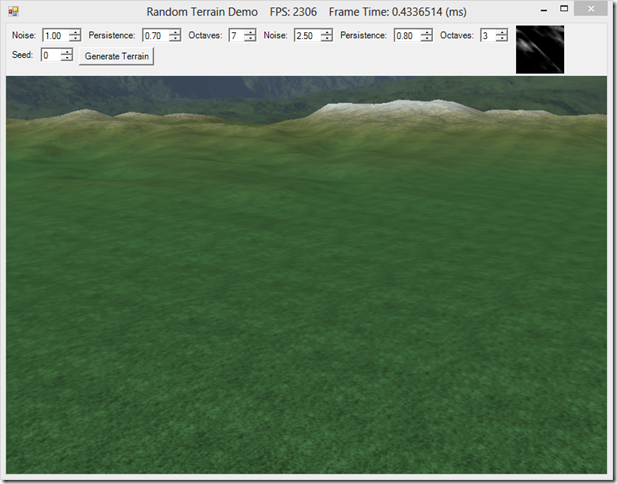Previously, we have used our Terrain class solely with heightmaps that we have loaded from a file. Now, we are going to extend our Terrain class to generate random heightmaps as well, which will add variety to our examples. We will be using Perlin Noise, which is a method of generating naturalistic pseudo-random textures developed by Ken Perlin. One of the advantages of using Perlin noise is that its output is deterministic; for a given set of control parameters, we will always generate the same noise texture. This is desirable for our terrain generation algorithm because it allows us to recreate the same heightmap given the same initial seed value and control parameters.
Because we will be generating random heightmaps for our terrain, we will also need to generate an appropriate blendmap to texture the resulting terrain. We will be using a simple method that assigns the different terrain textures based on the heightmap values; a more complex simulation might model the effects of weather, temperature and moisture to assign diffuse textures, but simply using the elevation works quite well with the texture set that we are using.
The code for this example is heavily influenced by Chapter 4 of Carl Granberg’s Programming an RTS Game with Direct3D , adapted into C# and taking advantage of some performance improvements that multi-core CPUs on modern computers offer us. The full code for this example can be found on my GitHub repository, at https://github.com/ericrrichards/dx11.git, under the RandomTerrainDemo project. In addition to the random terrain generation code, we will also look at how we can add Windows Forms controls to our application, which we will use to specify the parameters to use to create the random terrain.

